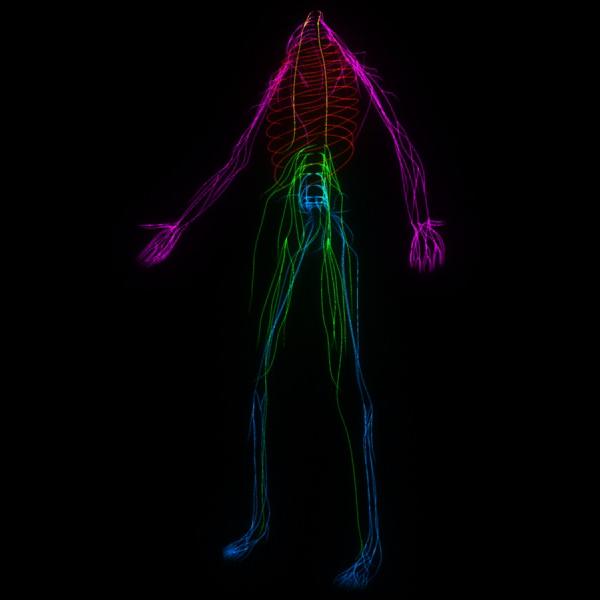

A major difference between somatic and autonomic nervous system is that the somatic nervous system always acts on skeletal muscles but the autonomic nervous system acts on smooth muscles, cardiac muscles, and also on glands. Moreover, the functions of somatic nervous system are less complex compared to that of the autonomic nervous system. Therefore, this is the key difference between somatic and autonomic nervous system. On the other hand, autonomic nervous system regulates involuntary movements of internal organs. Somatic nervous system controls voluntary movements of skeletal muscles. Peripheral nervous system has two main parts namely, the somatic nervous system and autonomic nervous system. What is the Difference Between Somatic and Autonomic Nervous System?
Both conduct nerve impulses from the central nervous system to other body parts. Furthermore, they are the communication lines between the central nervous system and the body. They are found in the vertebrate nervous system. Somatic and Autonomic Nervous System are parts of the peripheral nervous system. What are the Similarities Between Somatic and Autonomic Nervous System? Also, the major components of SONS are the cranial and spinal nerves. Namely, they are afferent (sensory) and efferent (motor). Furthermore, based on these functions, ANS has two main subsystems. Here, despite the fact that ANS regulates involuntary actions, controlling the respiration can be with some consciousness. Therefore, contraction of cardiac muscles to beat the heart, muscle movements in most parts of the digestive tract, regulation of respiratory function, maintenance of the size of the pupil, and sexual stimulation are some of the major functions governed by the ANS. What is Autonomic Nervous System?Īutonomic nervous system (ANS), also known as the visceral or involuntary nervous system, is a part of the peripheral nervous system that controls the essential muscular movements to sustain the life of an animal. Moreover, despite the ability to move the skeletal muscles very smoothly through the SONS, the reflex arc is an involuntary neural circuit that controls the skeletal muscles. However, the invertebrates sometimes have the inhibitory neurotransmitters too in their somatic nervous system. It is present in both vertebrates and invertebrates. In the above, acetylcholine is an excitatory neurotransmitter. At this junction, the release of acetylcholine from the terminal knobs of the axon takes place, and nicotinic acetylcholine receptors of skeletal muscles relay the stimulus to contract the whole muscle. Then, it proceeds down through axons and finally reaches the skeletal muscle at the neuromuscular junction. Firstly, the initial stimulus from the precentral gyrus (acetylcholine) transmits through the upper motor neuron and corticospinal tract. The nerve signals begin at the upper motor neurons in the precentral gyrus. However, this system cannot control the reflex arcs.įurthermore, it is important to study the pathway of the nerve signals to understand the SONS’s functions. Therefore, we can control the actions of this nervous system. There are efferent nerves present in the SONS to stimulate muscle contractions. The SONS is capable of managing the movements of the skeletal muscles voluntarily. Somatic nervous system (SONS), also known as the voluntary nervous system is a part of the peripheral nervous system. Side by Side Comparison – Somatic vs Autonomic Nervous System in Tabular FormĦ. Similarities Between Somatic and Autonomic Nervous Systemĥ. 
Wherein, the basis for the difference between somatic and autonomic nervous systems is their main function. While, the somatic and autonomic nervous systems are the two main components of the peripheral nervous system. Here, the central nervous system is the central processing unit that consists of the brain and the spinal cord. The nervous system comprises two main components Central Nervous System and the Peripheral Nervous system. The nervous system lets organisms feel the glory of life, and it functions through signal transferring throughout the body to control its movements and other activities. The key difference between somatic and autonomic nervous system is that the somatic nervous system regulates voluntary movements while the autonomic nervous system regulates involuntary movements of our body.






 0 kommentar(er)
0 kommentar(er)
